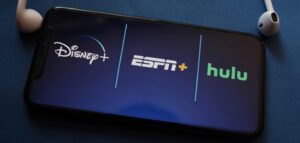 On Tuesday, Pandora revealed it would be introducing two visual ad units at the end of the year: a mobile ad unit delivered within the same space that has the album art, and that adjusts based on the phone’s screen size; and muted video in a responsive display unit.
On Tuesday, Pandora revealed it would be introducing two visual ad units at the end of the year: a mobile ad unit delivered within the same space that has the album art, and that adjusts based on the phone’s screen size; and muted video in a responsive display unit.
Both are in beta with Express and the Lexus Dealer Association, and will be made generally available later this year.
But Pandora is also upping its data-driven advertising capabilities.
The streaming platform can segment audiences based on users’ personal listening habits and recently rolled out its 1,000th audience segment in this area.
“We’ve invested a lot of time and resources in developing the music genome project,” said Pandora’s group product manager, Eric Hoppe. “It’s a great data asset that we now use for our advertising systems as well.”
Hoppe sat down with AdExchanger to discuss how Pandora is blending ad tech with music data to help advertisers better target their audiences and find new ones.
AdExchanger: What are your targeting capabilities, and how have they evolved over time?
ERIC HOPPE: Pandora captures over 1 billion data points per day powered by logged-in users. That allows for rich data sets, but we need to support third- and second-party data as well. To onboard more segments, we’ve had to improve the scalability of our audience targeting systems, which has allowed us to grow our targeting options substantially.
Historically we offered genre and artist targeting, but advertisers have requested targeting based on music listening behaviors because they are so personal. We can now target people who listen to emerging artists versus popular music, or different types of lyrics. We made our first-party demographic segments more robust, including household income and ethnicity.
We’ve brought on data scientists that work only on ad products, including targeting. They partner closely with the data scientists on our playlist teams and leverage a lot of their lessons learned in our song recommendation systems to target ads to users.
AdExchanger Daily
Get our editors’ roundup delivered to your inbox every weekday.
Daily Roundup
How are you managing your data?
We integrated with Krux’s data management platform at the beginning of the year. Through that, we’re able to ingest segments from data providers like Datalogix, Acxiom and Neustar.
We build those segments in their system and then pull them into ours. When advertisers put their data in a safe haven such as Acxiom, we’re able to leverage our connection with Krux to pull in their CRM.
What are your matching and onboarding capabilities?
Advertisers have a ton of CRM data. They say, “Here’s what we know about our customers. What can you tell us about them and how can you help us reach them or people like them?” We’ve developed proprietary lookalike audience capabilities that find people based on music listening preferences, time of day, type of phone and music. We’ve rolled this out recently and built it in-house. The algorithms used aren’t that complex. It’s more about the richness of the data set and the quality of the data.
What do your segments look like?
If you look at the CPG vertical, advertisers like to target moms and parents. Pandora has registration data on age and gender, but we’ve also noticed that moms tend to listen to a combination of adult and kids’ music. We can use that to establish a mom segment.
Because users are logging in to the same account on various devices, we can see what geolocations they live in and how that changes over time. For advertisers in education verticals, we can leverage users’ location to see who is listening to Pandora on college or university Wi-Fi IP addresses and then look at their age to verify that he or she is a college student.
What makes your targeting special?
We’ve been doing this for quite some time. We optimized our targeting systems to collect the right data and apply it in a relevant way. It’s one thing to have limitless segments, but it’s really about reaching the right user, figuring out what data best supports that and measuring which segments are driving engagement and purchase lift. It comes down to delivering relevant ads to users and return on ad spend for advertisers.
And how are you measuring that?
We partner with third parties to measure the sales lift of CPG- or retail-based campaigns. We also partner with location vendors to see how effectively our ads are driving foot traffic to stores.
If a telco advertiser is running media on Pandora, we can see what carrier a user has. Are people switching from one carrier to another? Are they staying with one because of a campaign? We measure that through A/B tests to isolate the effectiveness of running media on Pandora.
What other attribution capabilities do you offer?
In retail, we know how much a user who has been exposed to a campaign has purchased versus somebody who hasn’t. In the app world, we use mobile ad IDs to attribute app installs and purchases to ad impressions and clicks. We also have partnerships for in-store traffic where we can say, “These users were in this area and they heard or saw an ad on Pandora.”
Historically, we’ve seen these systems in ad tech as separate. You’d have a targeting system, an ad delivery system and a campaign effectiveness system. We’re working on bringing all of those together to provide actionable insights to advertisers before, during and after a campaign on a unified platform.
What kind of inventory is available for advanced segmentation? Display or in-stream audio ads?
Both. As part of our unified ad platform, we can enable targeting options across all of our placements. That includes audio on mobile and desktop, as well as sponsored listening, which allows users to engage with an ad in exchange for one hour of uninterrupted listening time.
Are you selling audio ads programmatically or using dynamic ad insertion?
We don’t have a programmatic audio solution at this time. The demand from the market hasn’t been there yet, but that’s changing and the time is right to move forward. We have plans but I can’t talk about them at this time. Maybe in a few months.
We have an ad insertion system that sequences the best time to serve an audio ad in the stream. We also make that available to advertisers for real-time targeting.













